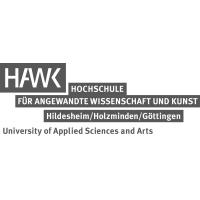This dataset was recorded in order to identify components of cold atmospheric plasma (CAP) that are relevant for affecting dermal microcirculation. It contains time-resolved microcirculation parameters (oxygen saturation (StO2), tissue hemoglobin index, near-infrared perfusion index, tissue water index) assessed on the lateral proximal left arm of 10 healthy volunteers (n=1 per volunteer) by hyperspectral imaging prior and after CAP treatment for 270 s. The CAP treatment was repeatedly performed at three different treatment modalities (normal, variation 1, variation 2) thus leading to three sub-datasets per volunteer. from: Thomas Borchardt et al 2024 J. Phys. D: Appl. Phys. 57 385203. (2024-09-10).
| Field | Value |
|---|---|
| Group | |
| Authors | |
| Release Date | 2024-11-11 |
| Identifier | 08391427-3712-4d80-9850-f50d42e462d0 |
| Permanent Identifier (DOI) | |
| Permanent Identifier (URI) | |
| Is supplementing | |
| Plasma Source Name | |
| Plasma Source Application | |
| Plasma Source Specification | |
| Plasma Source Properties | The PlasmaDerm®FLEX (CINOGY Systems GmbH, Duderstadt, Germany) was used throughout this study. This direct plasma source utilizes the skin tissue as counter electrode, whereas CAP formation occurs in the ambient air layer above the tissue at a rate of 300 Hz. The manufacturer declares that the device with an electrode area of 27.5 cm^2 is a medical device class IIa. The electrode is equipped with nubs, which are to be brought in contact with the counter electrode (human skin) for intended use. The nubs serve as spacers and ensure a constant distance of 2 mm between the counter electrode and the surface of the dielectric material housing the high voltage electrode. In this work, the PlasmaDerm®FLEX was operated at a power density of 4 mW/cm^2 facilitating gas temperatures of 30 °C – 40 °C and electron energies of 8 – 12 eV. from: Thomas Borchardt et al 2024 J. Phys. D: Appl. Phys. 57 385203. |
| Plasma Source Procedure | Especially for this study, we have developed experimental measures to realize three CAP modalities with different characteristics when applied to the subjects.
from: Thomas Borchardt et al 2024 J. Phys. D: Appl. Phys. 57 385203. |
| Plasma Medium Name | |
| Plasma Medium Properties | Standard and noCurrent: ambient air, 0 l/min; lessRONS: compressed air, 5 l/min |
| Plasma Medium Procedure | Compressed air was humidified to approx. 50% relative humidity |
| Plasma Target Name | |
| Plasma Target Properties | The field of examination was the lateral, proximal upper left arm of 10 healthy subjects with no visible signs of skin injuries or skin inflammation in the treatment area and no morbidities such as cardiac dysfunction, chronic liver or kidney disease, diabetes mellitus or vascular disease and no oral or skin therapy of the field of examination; three women, seven men, mean age: 27.2 ± 4.52 years, mean BMI: 23.9 ± 3.04.
---
from: Thomas Borchardt et al 2024 J. Phys. D: Appl. Phys. 57 385203. |
| Plasma Target Procedure | To stabilize the subject’s microcirculation prior to data assessment, all participants were asked to lie down on a mattress and rest for at least ten minutes. To prevent subjects from falling asleep associated with a drop in microcirculation parameters during the lengthy experiments, their level of attention was stabilized by showing familiar movies.
---
from: Thomas Borchardt et al 2024 J. Phys. D: Appl. Phys. 57 385203. |
| Plasma Diagnostics Name | |
| Plasma Diagnostics Properties | Hyperspectral imaging at a range of 500 – 1000 nm, spectral resolution of approximately 5 nm, resolution of 640 × 480 pixels |
| Plasma Diagnostics Procedure | The camera system was positioned 0.5 m above the treatment area, as recommended by the manufacturer for correct data acquisition. After the first ten minutes of resting, a microcirculation baseline was recorded for a period of ten minutes with one picture of the TA taken every 2 min (Baseline = 6 datasets). Afterwards, CAP application was performed with either one of the CAP modalities on all participants for 4.5 min in separate experiments (CAP treatment = 2 datasets missing), with at least one week between experiments on the same subject. Immediately after the intervention, microcirculation parameters were assessed for 30 min at a rate of one picture recorded every 2 min (post treatment = 16 datasets). Assessment of microcirculation parameters Processing of image data from: Thomas Borchardt et al 2024 J. Phys. D: Appl. Phys. 57 385203. |
| Language | English |
| License | |
| Public Access Level | Public |
| Contact Name | Borchardt, Thomas |
| Contact Email |
Data and Resources
- Replication Data for: Which CAP components are relevant for enhancing dermal microcirculation in intact skin? (external resource)html
Public access to the data file (zip archive) is provided by the external...
Go to resource

![[Open Data]](https://assets.okfn.org/images/ok_buttons/od_80x15_blue.png)